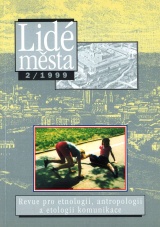,,Mystika" a „magie"
Úvaha o možnostech uplatnění kulturně dějinné klasifikace v dějezpytné práci
DOI:
https://doi.org/10.14712/12128112.4015Abstrakt
This report ls devoted both to the use of the term " mysticism" in the Czech historiography of the "Goll school" and the diffilculties encountered when applying social and cultural, and anthropological classification in historic work. Czech historians such as Vlastimil Kybal used the term "mysticism" in a meaning which is closer to the term "witchcraft" as used in sociological literature by Max Weber and current cultural anthropology. Kybal meant with "mysticism" association wilh God, incarnation in it, bul mediated through an act of sacrament and the subject matter of sacrament. This use differs from the work with the term "mysticism" as used, e.g., by Ernst Troeltsch. Vlastimil Kybal speaks about " mysticism" especially in connection wilh the demand of the frequent lay communion of altar sacrament as advocated by Jan Milíc z Kromeríze and Matej z Janova. The theme of frequent acceptation of altar sacrament is also a telling example of a diversity of cultural situations. lt enables, in fact, various "readings." There is, e. g., an interpretation stressing the "magic" features of frequent lay acceptation of altar sacrament (incarnation into Christ, mediated by sensually perceived entity). This interpretation may be supported by the findings of František Šmahel about popular culture in thc pre-Hussite era. At the same time, the demand of frequent lay sacrament can be interpreted in relation to its "ethical" importance (stress on the sacrament only being accepted by a man purged from sins and given by a "moral" priest). This interpretation is in keeping with an older way of reviewlng the importance of the Hussitism.
Stahování
Publikováno
Jak citovat
Číslo
Sekce
Licence

Tato práce je licencována pod Mezinárodní licencí Creative Commons Attribution-NonCommercial-NoDerivatives 4.0.


